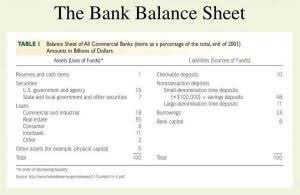Payroll Accounting: Definition, Importance & Setup Process

Wages are payments for employee services at an hourly rate or
a project basis whereas salaries are payments for employee services at a
monthly or yearly rate. Be sure that you add together only the hours that they’ve worked that they have not been paid for. That way, they know when to expect a paycheck, and you know the period to calculate their pay for. Plus, most states have a required pay frequency—make sure you’re familiar with these laws.

At the end of an accounting period, you (or your accountant) will prepare a summary of your general ledger. Chartered accountant Michael Brown is the founder and CEO of Double Entry Bookkeeping. He has worked as an accountant and consultant for more than 25 years and has built financial models for all types of industries.
Journal Entry to Record Paying Expense Being Held as Liability
In the event of an error, the company’s on-site personnel must deal with upset employees. Companies might also face tax penalties for errors made by the payroll service. Recall that the paychecks issued on December 29 covered the work done by hourly employees only through December 24. On December 31, the company must record the cost of work done during the week of December 25–31.

Let’s break down how to record a payroll journal entry with these ideas. To balance this expense, you’d pay $1,500 as credit or cash asset (accounts payable). Because the debit and credit now have the same amount recorded, your entry is balanced, and all parties are satisfied. Say you wanted to see how much you spent on employee payroll last year, as opposed to the year before. All the wages you’d be looking at are payroll expenses (i.e., wages that you have already paid).
FAQs on Payroll Accounting
It eliminates the need for manual payments, calculations, and errors. With proper accounting software, you can have a more accurate picture of your payroll expenses and transactions and you can payroll accounting examples integrate that info with other financial programs. First, a proper payroll accounting system will make sure you keep track of your payroll expenses and comply with laws at the same time.
As mentioned above, this entry is the initial record of all the expenses owed and paid, including payroll tax, salary, and labor. The items included in this entry aren’t limited to those, however, as you could also be adding things like retirement 401k, various insurances, or other deductions. If you’re familiar with that process, then introducing a payroll journal entry into your routine should be like taking the training wheels off of a bike. Payroll journal entries are the optimal way to track these payroll expenses with minimal stress for in-person employees and any hybrid or remote staff you might employ. Using a payroll service in the everyday happenings of the office is a great tool to help alleviate the complications of bookkeeping. Several withholdings and deductions are taken out of an employee’s gross pay.
Is Payroll an Asset or Liability?
You should consider our materials (explanation, practice quiz, quick tests, certificate of achievement, etc.) to be an introduction to payroll accounting. You’ll have to remit the exact amount you credited your cash account with for state and federal taxes. It may seem like there’s a lot of work involved, but it’s not as complex as it sounds.
- Within QuickBooks, you can prepare a single journal entry to record all salaries.
- This includes employee wages and employer’s Social Security taxes.
- Payroll accounting refers to the system that organizations use to keep track of employee wages, benefits, payroll taxes and types of deductions.
- An employer may have both liabilities and expenses for the same employee, due to paid time off.
- The Credit section includes FICA taxes, state withholding taxes, federal withholding taxes, social security taxes, and Medicare taxes.
Net pay — meaning how much an employee actually receives in a paycheck – is the amount after deductions have been made. Every tax season, you’ll find this amount in withholdings on your W2. Essentially, payroll-related accounts include a mixture of expenses and liabilities. In the first entry, you will record your upcoming expenses and how much you owe (since you haven’t run your payroll yet).
We gave you some tips in prior steps to help check yourself along the way, but a payroll reconciliation is a more in-depth approach. Similar to accrued vacation pay, you’ll also need to keep track of the amount of sick pay an employee has earned on the books. You can establish how much sick pay an employee would earn per pay period (as we did in the above accrued vacation pay example).
Payroll accounting helps you determine whether to hire contractors, full-time employees, or part-timers. The sum of all the concepts listed above forms the accrued expense for keeping an employee on the payroll. Download your free payroll chart of accounts list for future reference.
Step 13. Deposit Withheld Taxes
For example, FLSA rules specify when workers are considered on the clock and when they should be paid overtime. For example the annual maximum amount subject to the Social Security tax is referred to as the “annual wage limit”. Similarly, the IRS Form W-2 is entitled Wage and Tax Statement. Understanding these points will be helpful in calculating a salaried employee’s hourly rate of pay and overtime pay earned by salaried employees. Payroll accountants prepare, generate, and maintain payroll documentation.


